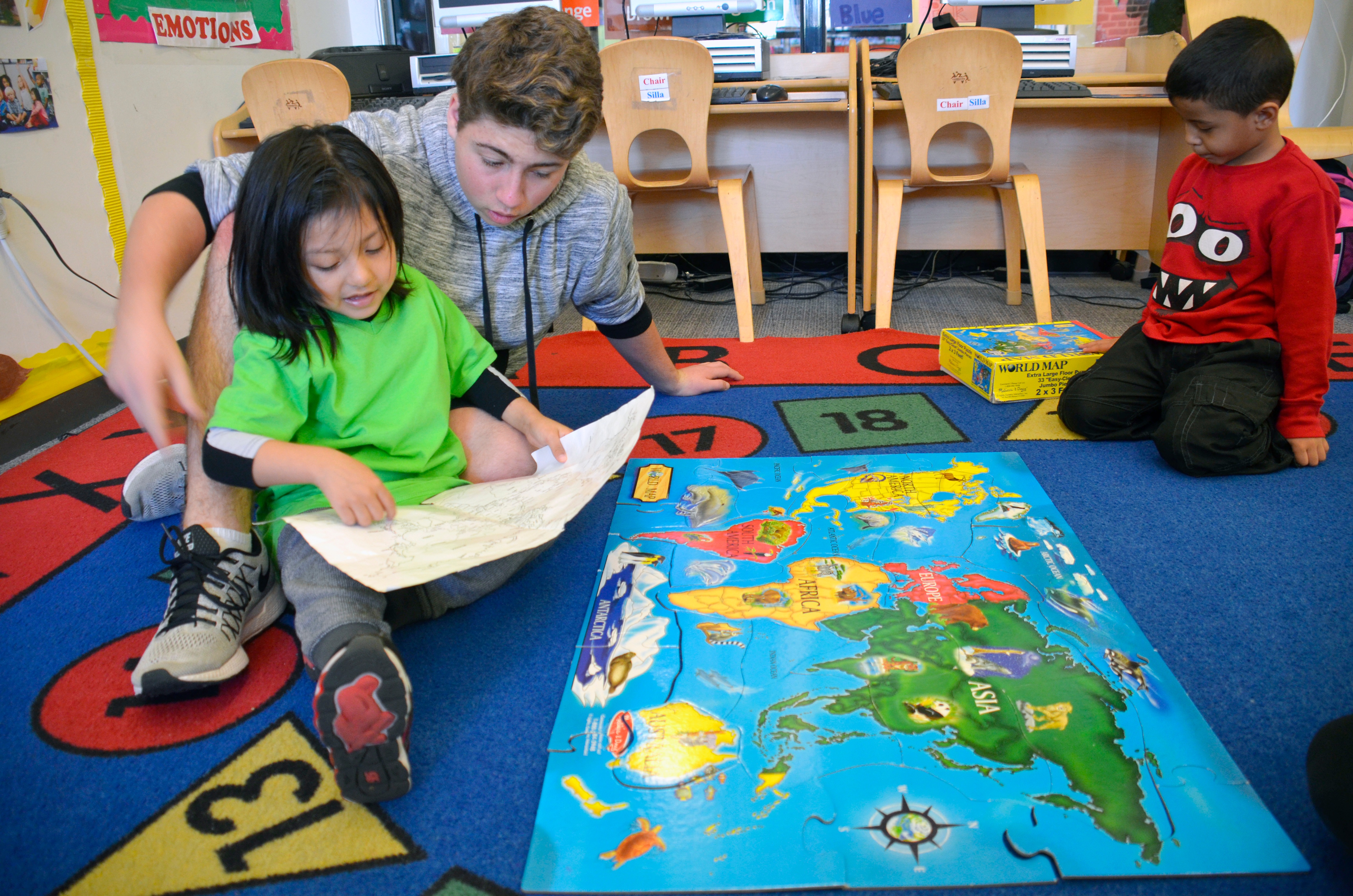
“Global education” is an educational phrase that has been used so often, in so many different ways, that it risks losing its impact. This would be a loss, because nothing is more needed in American education, as a reflection of American society, than a global perspective. We are a large country, mostly buffered geographically by big oceans. However, these historical insulators have less significance, on the human level, today. In the Information Age, the internet and cell phones allow us to stand side by side, or face to face, virtually, with people around the globe whose life experiences may be radically different from our own. This has affected the way we do business, our educational systems, and the nature of our conflicts.
So what do we mean by global education? There are many descriptions of “global education” available in the education field. “Global” can mean “international,” or “cross cultural.” Or, it can mean “holistic,” “comprehensive,” or “all-inclusive.” A good education embraces both of these meanings. At SSFS we believe that global education is woven into our core, which we describe as QUESTION - REFLECTION - ACTION, a cyclical learning process. When the questioning is nourished by exposure to different perspectives, reflection can be more inclusive, and actions can be informed, nuanced, and sensitive to context.
A global perspective is not something that comes to a person in a flash. It is developed and nurtured over time, through whole sets of experiences that challenge us to walk in someone else’s shoes. A global perspective can be shared through any subject area, and at any grade level. This morning I took a quick stroll around the Sandy Spring Friends School (SSFS) Middle School and asked a few teachers about global education in what they are teaching right now. Here is a sampling :
- Keith Adams is teaching students about different musical systems in different cultures in his music class. I asked him why this is important. “Music is powerfully felt. There is a universal element, even biological, to music. At the same time, it’s important to understand that organizational concepts may be imposed on us.” It is good for students to QUESTION assumptions about organizational concepts. One way of organizing something is probably not the only way. Adams continued “For music, ‘in tune’ means different things in different musical systems. We’re studying musical systems for India and Pakistan, offering students different perspectives on how to organize sound - how it is perceived by people wearing different cultural goggles. Students need to know how to face differing perspectives. To quote one of my students, we learn that ‘weird is relative.’ What is weird for you is not weird for someone else.”
- Some learning provides students with opportunities for REFLECTION. “It is easy for students to see the world from just the perspective of their own bubble,” says math teacher Kristen Amouri. “We need to poke those bubbles now and then so that students gain perspective on their own significance/insignificance.” Beyond her own math classroom, Kristen sees this at work in students’ service projects, such as a recent student collection for a local food bank. “Students lined up in a long line, and transferred the food out of the collection space. Each student had their hands on the food that was collected and donated. This simple gesture makes the experience tangible and immediate. It helps remove blinders.”
- Collaboration is an ACTION. Dean of Students and PE teacher Francis Zell spoke about students learning essential skills of collaboration with others, working towards solutions, and being open to different perspectives. Zell sees this at work not only in classes, but in the continuum of experiences across all three divisions at the School, through the Responsive Classroom approach in the Lower School, to the MIddle School advisory program, and through the advisory program and student-teacher learning partnerships in the Upper School. “In contrast to the current political climate of I/me, it is us/we in the work world where the ability to collaborate is valued. Nowadays people need to be able to manage up, down, and sideways.” Zell added “It is not enough now to learn facts - what happened in 1492. Students need to understand why changes happened, what were the effects, the plusses and minuses. Our students, and we, need to be constant learners.”
- Art is a great place to QUESTION why an artist did something a certain way, to REFLECT on one’s experience of art, and to ACT through creativity. Visual Arts teacher Michelle Puhl-Price shared several themes her students are exploring this year and described how they relate to students’ work in other subjects: Studying Ghanan Gawu art from discarded objects, watercolors based on Maori facial tattoos, Mola fabric designs from Panamanian Kona women, and the Le Gout tapestry connect to student readings and study in other subjects. Indonesian and Chinese shadow puppets connect to learning about storytelling in 6th grade English and dramatic presentations in drama. Other art projects connect students to their study of the Harlem Renaissance in social studies class. Other students are studying illuminated letters and gargoyles via Baltimore’s Walters Art Museum. All of these help learners make connections between the familiar and the unfamiliar, seeing the world through the eyes of others.
Such experiences, begun in the Lower School, expanded in the Middle School, and developed through cross-cultural and international experiences in the Upper School at SSFS, provide students a deep understanding of what it means to work alongside those whose life paths started in different places. Our globe can use more of that.
